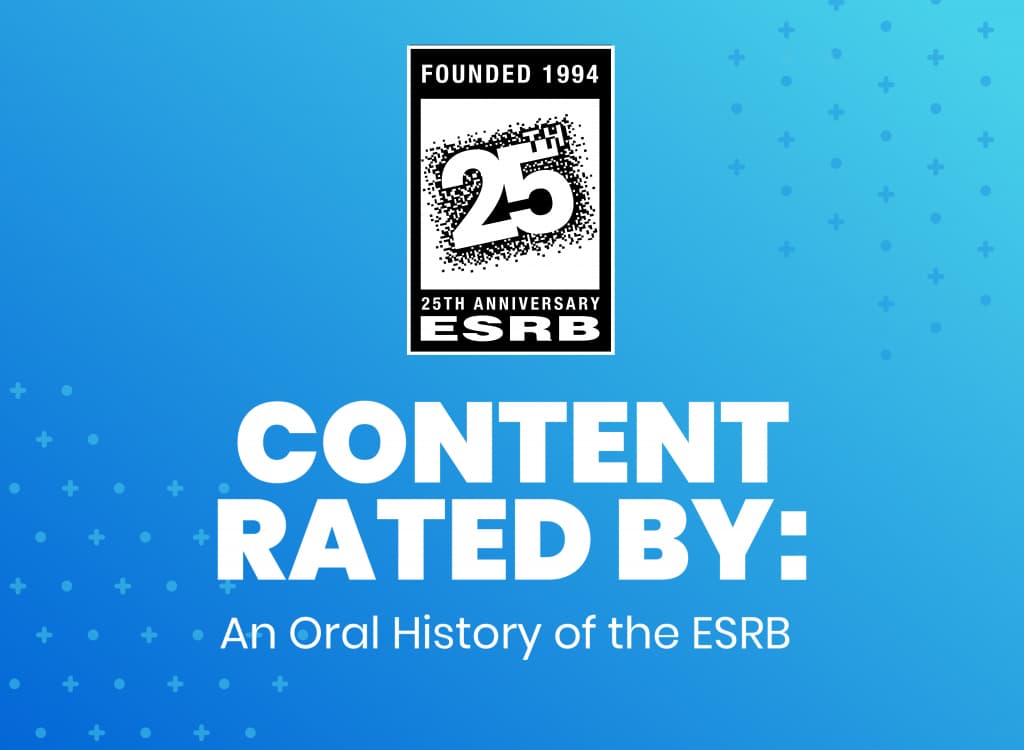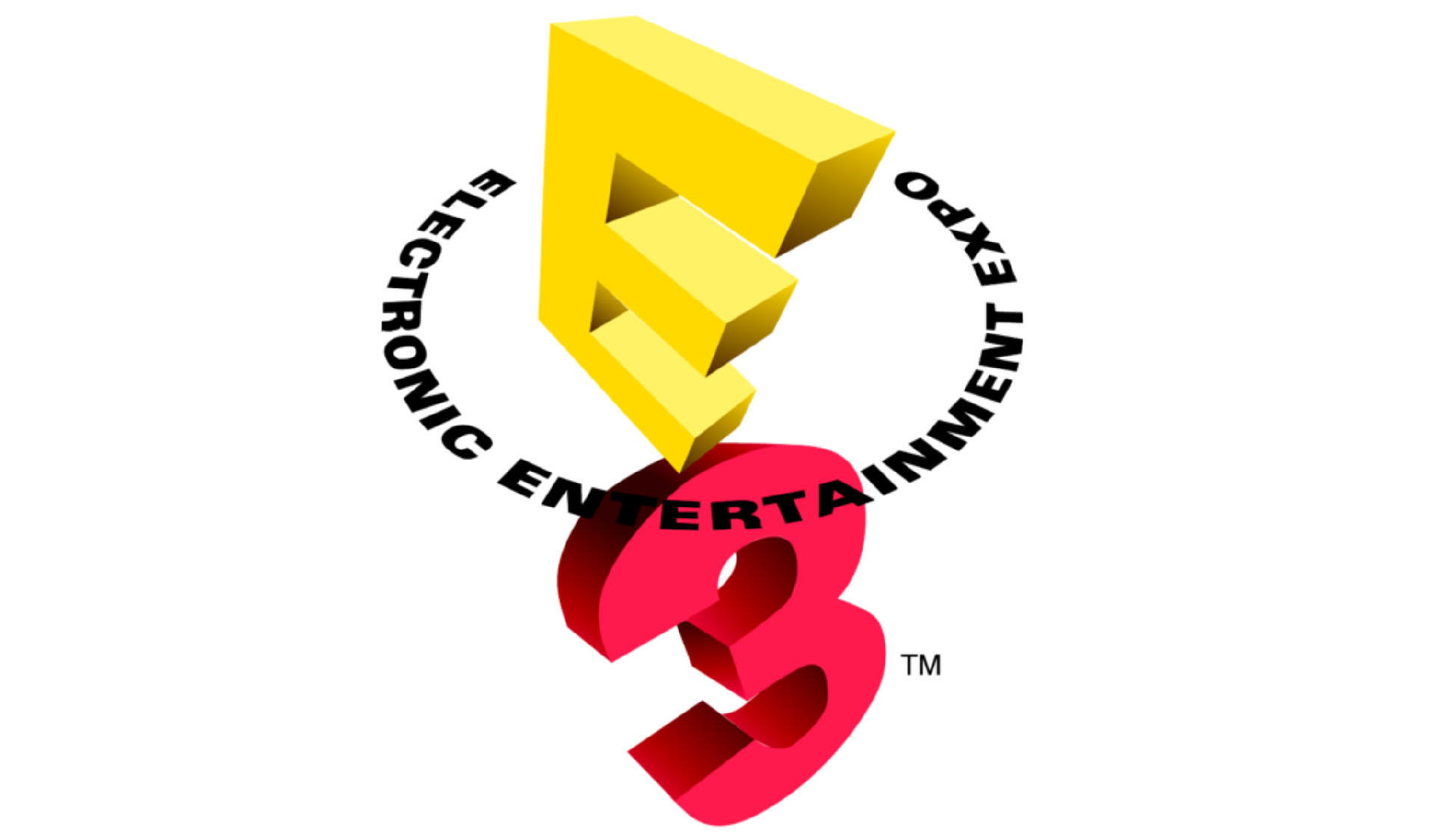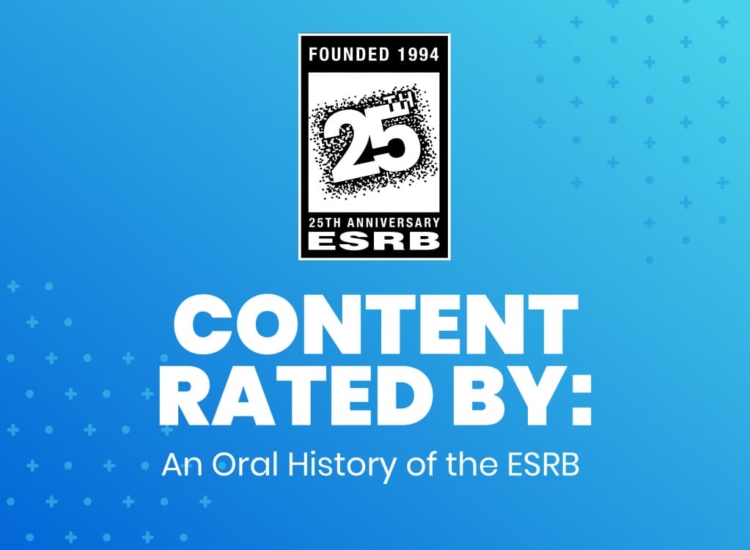Part 3: Parallel Tracks

To help commemorate its 25th anniversary, the Entertainment Software Rating Board (ESRB) reached out to Blake J. Harris, the best-selling author of Console Wars: Sega, Nintendo, and the Battle That Defined a Generation and The History of the Future: Oculus, Facebook and the Revolution That Swept Virtual Reality to document the behind-the-scenes origins of the rating system for video games and how it has evolved over the past quarter century. Content Rated By: An Oral History of the ESRB provides eyewitness accounts from the key people involved in the ESRB’s creation and its development into one of the country’s finest examples of industry self-regulation.
JACK HEISTAND (EA): Out of the gate, our biggest challenge was timing. We had made this commitment that we were going to get products rated as quickly as possible. So, we needed to create a ratings board, staff it up, figure out the guidelines and educate publishers as quickly as possible.
Quickly, however, an alternative solution presented itself.
JACK HEISTAND (EA): While I’m getting this thing going, Jack Valenti from the MPAA approached us about doing the ratings for our industry. I don’t recall if they were going to let us use their ratings [i.e. G, PG, PG-13, R] or if their plan was to create a new system. But the idea was that the MPAA would do it all for us.
GAIL MARKELS (MPAA): When I was at MPAA we were asked by the leadership there to put together a proposal for rating video games. I worked with Jack Valenti and drafted a proposal for MPAA to rate video games.
TOM KALINSKE (SEGA): I couldn’t believe it! A year ago, when we were creating our rating system for Sega, the MPAA was threatening to sue us—and here they were now pitching us for business.
JACK HEISTAND (EA): My sense was that the MPAA saw this as a big potential profit center. And though you wouldn’t think directly that the game business was in competition with movies, we were in an indirect way. We were in competition for hours and eyeballs, you know? And secondarily, they had no expertise in this area. They were pretty much run by the heads of the major studios—at the end of the day, Jack Valenti’s got to report to them. So there might have been a conflict of interest…
GAIL MARKELS (MPAA): Eventually, the steering committee [for what would later be the industry’s trade association] said, “We’re going to go our own way.” They didn’t think it was appropriate to have the MPAA rate video games, but they asked me to join the organization because of my experience with trade associations, managing state legislation and industry self-regulatory systems. At that point, I’d been at MPAA for over 10 years and thought it was time for a change. I was ready for a new challenge.
DOUG LOWENSTEIN (ROBINSON LAKE SAWYER MILLER): The idea of being a “stepchild” to the Motion Picture Association of America just wasn’t appealing to people. We felt we needed to develop something that was unique to this form of entertainment. And getting Gail was a big deal. She was a critical early hire because she had unique and unmatched experience working with entertainment industry ratings.
Interestingly enough, there already was a unique-to-this-form-of-entertainment solution that the industry could have moved to adopt: the Sega-created VRC system that Kalinske’s company had been using to rate all games appearing on their hardware since the middle of 1993.
DOUG LOWENSTEIN (ROBINSON LAKE SAWYER MILLER): Sega did already have a rating system in place, but that was obviously a non-starter for Nintendo, which was not going to adopt anything Sega had created.
As such, the industry decided to build something together from scratch—something, notably, that aimed to be more comprehensive and versatile than Sega’s system (which only had three age categories: GA, MA-13, and MA-17). Though in a somewhat ironic twist, however, the person they turned to was the same expert who Sega had relied upon to help create the VRC: Dr. Arthur Pober.
ARTHUR POBER (CARU): “Whatever problem you have, we’re gonna solve it.” That has always been my mantra. But I have to admit that when they first approached me about running a ratings board for the whole video game industry, my first thought was: what do they want me for?
TOM KALINSKE (SEGA): Arthur was the perfect guy to run this new ratings board—which, of course, would eventually become the “ESRB” [Entertainment Software Rating Board]. He had good relationships inside of the education world, inside of the child development world, and knew the proper people who were child psychologists and sociologists. Plus, we knew he could do it. Because he had already done it before—for us, one year earlier!
JACK HEISTAND (EA): Dr. Pober’s credentials were very solid. From everything I could tell about him, the guy was very honorable. A man of integrity. And would not be cow-towed by a publisher putting pressure on him.
ARTHUR POBER (CARU): Then I started thinking: well, sure, when you put it like that [laughing]! Between my being an expert in child education in terms of psychology—to be dealing with violence, to be dealing with media—and being able to articulate it to the government with the work I was doing with CARU; then, yeah, I guess I was the best game in town! Seriously though: I can be a pain in the ass. I can curse a lot. I can do all of those things. But I cannot be compromised and if I can do the right thing, that’s what I’m about.
DOUG LOWENSTEIN (ROBINSON LAKE SAWYER MILLER): It was a huge challenge. And Dr. Pober was obviously an important part about thinking creatively about how to do that. I don’t remember chapter and verse, but there were a number of meetings where he came in with his concepts and people reacted positively to some, negatively to others, especially around the actual categories and content descriptors. But the fundamental model that he envisioned was eventually what was approved.
SOON ENOUGH, THE FINAL RATING CATEGORIES AND ICONS WERE UNVEILED:
In addition to these five categories, Pober also proposed a series of “content descriptors,” which, when applicable, would alert consumers to content like “animated blood,” “strong language,” or “the depiction of betting-like behavior.” The crux of Pober’s model was an impartial, third-party system in which anonymous-to-the-industry raters would receive and review video capture of game play (as well as be alerted by the publisher about any controversial content) and then apply an appropriate age rating.
DON JAMES (NINTENDO): Because of my design background, I was nominated to be part of the small team that would come up with the first rating categories and the icons that would accompany them. So, myself and a small team—with Arthur being the point person, of course—we ended up having a lot of meetings (and phone calls back and forth) to figure all this out.
DONA FRASER (ACCLAIM): I remember when Arthur Pober came to Acclaim. To talk to us about the whole ratings situation. At that time, we were a very young company. We were like, “Screw ratings!” We were trying every which way to not have to do them. In the early days, we would sometimes “forget” to build the rating icon into the package art (and so, instead, we would just sticker the package). But for the most part, it was just easier to get on board. We weren’t opposed to ratings, per se; I just think that overall the industry just felt like we were being targeted.
ARTHUR POBER (ESRB): To be honest with you, the ratings were only one part of my job. But what was far more interesting—especially early on—was: how do you bring together a group of people who were so adversarial to formulate themselves into one solid unit? And truthfully, if there was one thing that I give myself credit for: it was not only creating the rating system—at such an ungodly time and at such an ungodly pace—but also the ability to force these very strong people with specific agendas—at a time when this was a new burgeoning industry making a lot of money (and they did not want to give that up; they wanted to make more)—and bring them together as a solid unit.
DON JAMES (NINTENDO): For us, it was really about putting on the “industry” hat.
TOM KALINSKE (SEGA): It wasn’t comfortable, you know? Being in the same room as our competitors—with people like Howard Lincoln and Don James. I mean, you have to remember, this was at the height of our battle with Nintendo. But difficult as it could be to work together, we all knew that it was the right thing to do.
ARTHUR POBER (ESRB): If you thought it was difficult with just Tom and Howard…that was a piece of cake. Because they, at least, were people who understood the bigger context of the industry and what was responsible to do.
Even with that mutual understanding, both Kalinske and Lincoln would occasionally be swayed by the emotion of frustration. Which is what led to things like Kalinske publicly blaming Nintendo for the congressional hearings—saying that they had fed videotapes with controversial scenes to members of Congress in an effort to “slow our momentum”—which, in turn, prompted Lincoln to reply with a very short (but very public) piece of “Roses are Red” poetry.
JACK HEISTAND (EA): Pretty quickly, though, we were able to get Howard Lincoln and Tom Kalinske to stop with that kind of stuff. But they could both see that the approach they were taking wasn’t working. One of the key steps initially was that they had to stop talking to the press. And they embraced that very quickly—in part, because it took them out of this un-wanted spotlight.
Simultaneously—and in line with the vision that Heistand had set forth back in Vegas—the industry spent the first half of 1994 moving forward with its other primary objective…
DOUG LOWENSTEIN (ROBINSON LAKE SAWYER MILLER): Arthur, I think, was actually hired before me. And as he was building out the concept for the ratings board, we were building up the concept for the industry’s trade association. The two were moving on kind of parallel (and closely integrated) tracks.
The industry’s trade association was officially founded in April 1994, and Doug Lowenstein was nominated to lead the yet-to-be-named association.
DOUG LOWENSTEIN (IDSA): After going through many, many, many name combinations [of what this trade association should be called] we came up with the literally-accurate-but-completely-meaningless name, Interactive Digital Software Association (IDSA). It was meaningless because we knew what we meant but when you said the name to others it was far from obvious what industry we represented! Once the decision was made to create a trade association, then we had to figure out a way to fund the association. In addition to our needing to create a rating system, the other reality was that the industry had felt increasingly marginalized at the Consumer Electronics Show, which is where it had been going as a trade show venue. And so there was a sense that one of the other major acts of this organization in those early days was creating a trade show that would celebrate the industry. And not coincidentally, a trade show [like that] could provide a funding source to operate the ratings board.
TOM KALINSKE (SEGA): In short, the idea was to ditch CES and start a trade show of our own. The following year—at a packed Los Angeles Convention Center—the game industry would host its first ever “trade show of our own”: the Electronic Entertainment Expo (E3).
…
Read Part 4: Evolution, Expansion & Enforcement (or Lack Thereof) >>
The next five parts of Content Rated By: An Oral History of the ESRB include the development of the enforcement system, how ratings are assigned, garnering support from video game retailers and how the ESRB created a scalable global rating solution to meet the needs of mobile app and other digital game storefronts. Read Part 4 in the ESRB About section.
Blake J. Harris is the best-selling author of Console Wars: Sega, Nintendo and the Battle that Defined a Generation, which is currently being adapted for television by Legendary Entertainment.

